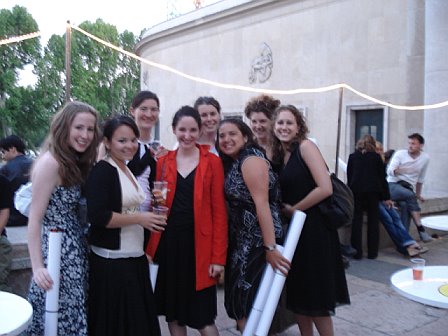The George Washington University

The Department of Theatre and Dance
and
The Elizabeth Somers
Leadership Programs
TRDA 195:
Paris: Modernism and The Arts,
Then and Now, Summer 2006
Course Overview: Early in the
20th century, Modernism was
celebrated in Gertrude Stein’s salon,
Picasso’s studio, Sylvia Beach’s
bookshop, Andre Kertesz’s
photographs, and the Ballets Russes
Theatre. Working in Paris,
Serge Diaghilev, artistic director of the Ballet Russes Theatre initiated artistic collaborations that brought together Vaslav Nijinsky and Igor Stravinsky to create one of the seminal works of 20th century Modernism, Le Sacre du Printemps. Pablo Picasso created sets and costumes for the Ballets Russes productions. Henri Matisse collaborated with Igor Stravinsky on the Ballet, Chant du Rossignol. The artistic community in Paris changed the course of fine art, literature, music, and dance. As Gertrude Stein said, “Paris was the place that suited us who were to create the twentieth century art and literature.” This course will offer a multi-disciplinary view of the aesthetic movements that changed the course of art and thought in Europe and elsewhere during the first half of the 20th century using the museums and sites of Paris as resources. An examination of current contemporary developments in dance physical dance theatre), music
(hip-hop and jazz), art (galleries and squats), and poetry readings will complement the

‘modern’ art found in museums and repertory
theatres. Students will become familiar with strategies for analyzing visual images and for understanding the ways in which meaning is both historically situated and conveyed through the combination of subject matter and form. The framework of the artistic past will guide students as they design a collaborative photographic and literary journal of their experience. Using digital photography students will explore and document the contemporary artistic scene, and collaborate in producing a photographic and literary journal. Students will be introduced to theatre, dance, music, and the fine arts traditions of ‘modern’ Paris and they will add their own voice to this historical perspective.














